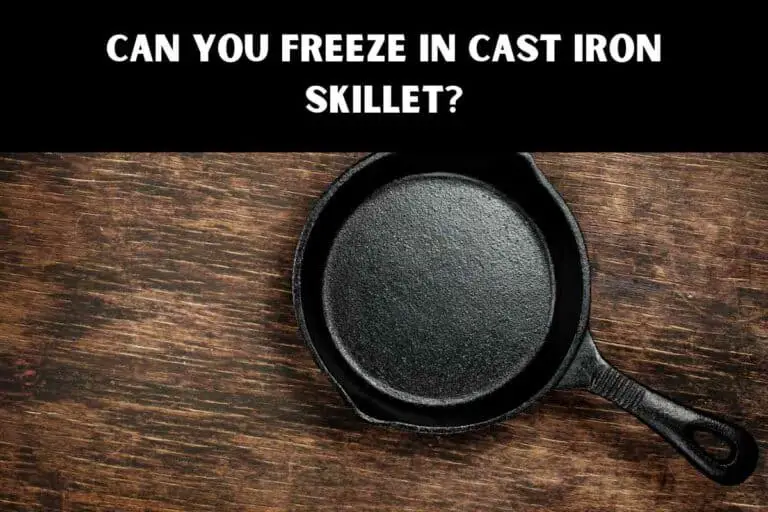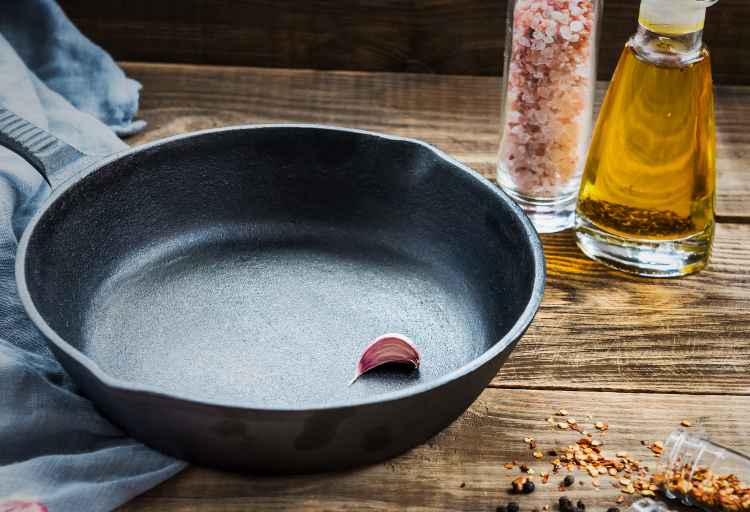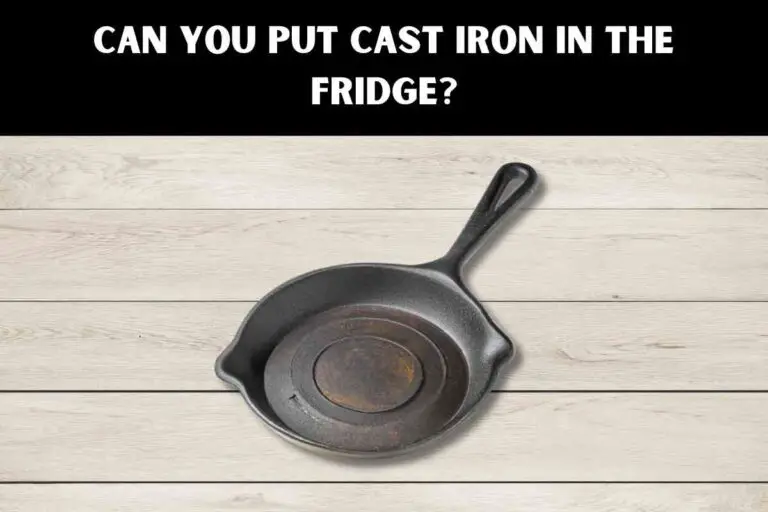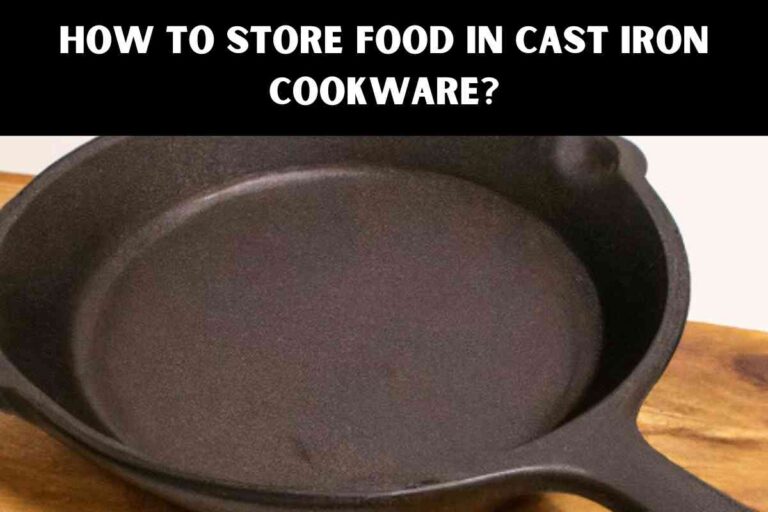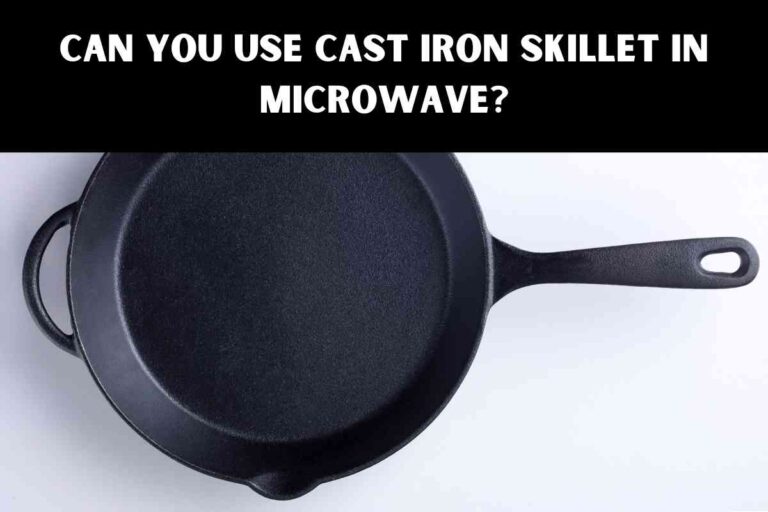Can You Use Cast Iron on a Glass Top Stove?
Are you a cooking enthusiast looking to take your culinary skills to the next level? If you own a glass top stove and have been hesitant to use cast iron cookware, you’re in the right place! Mastering the art of cooking with cast iron on a glass top stove may seem daunting, but fear not, we’ve got you covered.
Can You Use Cast Iron on a Glass Top Stove? Yes, it is generally safe to use cast iron cookware on ceramic-glass stoves and cooktops, provided certain precautions are followed. To prevent damage, it is important to handle cast iron with care, placing it gently on the cooktop and avoiding sliding it.
By adhering to these guidelines, cast iron can be successfully used on any smooth-top or glass surface range or cooktop without causing harm to the pan or cooking surface.
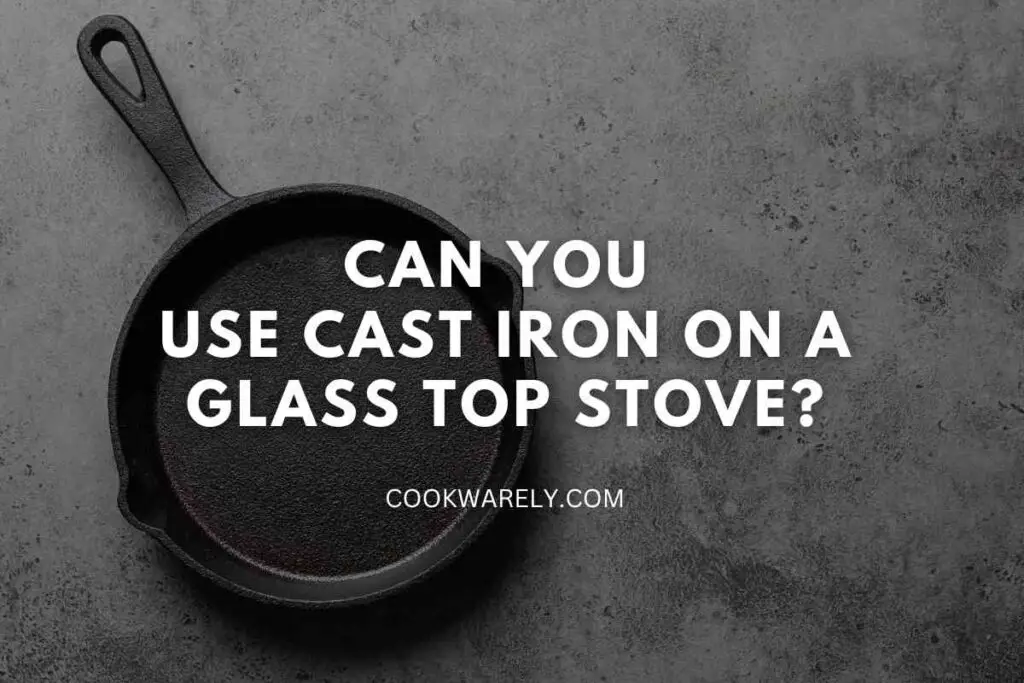
Can You Use Cast Iron on a Glass Top Stove?
Cooking with cast iron offers numerous benefits that make it a favorite among chefs and home cooks alike. One of the primary advantages is its ability to distribute heat evenly.
Cast iron retains heat exceptionally well, which means your food will cook evenly and consistently. This makes it ideal for dishes that require precise temperature control, such as searing steaks or baking delicate desserts.
Another benefit of cast iron cookware is its versatility. You can use it on various heat sources, including gas, electric, and glass top stoves. Its durability also makes it suitable for use in the oven, making it a true workhorse in the kitchen. Whether you’re frying, sautéing, or baking, a cast iron skillet can handle it all.
Lastly, cooking with cast iron can actually boost your iron intake. Small amounts of iron leach into the food during the cooking process, providing a natural dietary supplement. This is especially beneficial for individuals with iron deficiencies or those looking to increase their iron levels.
Choosing the Right Cast Iron Cookware for Your Glass Top Stove
When selecting cast iron cookware for your glass top stove, there are a few factors to consider. Firstly, ensure that the cookware has a flat and smooth bottom.
A rough or uneven bottom can scratch the glass surface, causing damage to both the cookware and the stove. Look for cast iron skillets or pans with a flat base that will provide maximum contact with the glass and distribute heat evenly.
Additionally, consider the size and weight of the cookware. Cast iron is notoriously heavy, so if you have a glass top stove, it’s essential to choose a skillet or pan that you can comfortably lift and maneuver. Opt for a size that suits your cooking needs without overwhelming your stove or causing potential accidents.
Lastly, it’s worth mentioning that enameled cast iron cookware is a great option for glass top stoves. The enamel coating provides an additional layer of protection for the glass surface, reducing the risk of scratches.
Enameled cast iron also offers the same benefits as traditional cast iron, such as heat retention and even cooking.
Preparing Your Glass Top Stove for Cast Iron Cooking
Before using cast iron on your glass top stove, it’s crucial to prepare the surface to prevent damage.
Follow these steps to ensure a smooth and safe cooking experience:
1. Clean the stove thoroughly
Start by cleaning your glass top stove to remove any dirt or residue that could potentially scratch the surface. Use a non-abrasive cleaner designed specifically for glass top stoves, and gently scrub away any stains or spills. Rinse the surface thoroughly and dry it completely.
2. Check for scratches or cracks
Inspect your glass top stove for any existing scratches or cracks. If you notice any damage, it’s advisable to repair or replace the stove before using cast iron cookware. Cooking on a damaged surface can exacerbate the problem and lead to further issues down the line.
3. Protect the glass surface
To protect your glass top stove from direct contact with cast iron, consider using a silicone mat or a cast iron trivet.
These accessories create a barrier between the cookware and the stove, reducing the risk of scratches and damage. Place the mat or trivet on the burner before placing the cast iron skillet or pan on top.
Seasoning Your Cast Iron Cookware for Optimal Performance
Seasoning is a crucial step in maintaining and enhancing the performance of your cast iron cookware. Seasoning involves coating the surface of the cookware with a thin layer of oil and baking it to create a natural non-stick surface. This process not only prevents rust but also enhances the flavor and longevity of your cast iron.
To season your cast iron cookware, follow these steps:
1. Clean the cookware
Start by thoroughly cleaning your cast iron skillet or pan to remove any dirt or debris. Use hot water and a stiff brush to scrub away any residues. Avoid using soap, as it can strip away the seasoning.
2. Dry the cookware
Once clean, dry the cookware completely using a clean towel or by placing it on a low heat burner for a few minutes. Moisture can lead to rust, so it’s essential to ensure the cookware is completely dry.
3. Apply a thin layer of oil
Using a paper towel or a clean cloth, apply a thin layer of oil to the entire surface of the cookware, including the handle. Common oils used for seasoning cast iron include vegetable oil, canola oil, and flaxseed oil. Ensure you cover every nook and cranny to create an even coating.
4. Bake the cookware
Preheat your oven to a high temperature, around 400°F (200°C). Place the oiled cast iron cookware in the oven, upside down, with a baking sheet or aluminum foil on the bottom rack to catch any drips.
Bake the cookware for approximately one hour to allow the oil to polymerize and create a durable seasoning layer.
5. Cool and repeat
Once the hour is up, turn off the oven and allow the cookware to cool inside. Repeat the seasoning process several times to build up a robust seasoning layer. The more you season, the better the non-stick surface will become.
Cooking Techniques for Cast Iron on a Glass Top Stove
When it comes to cooking with cast iron on a glass top stove, certain techniques yield the best results. Here are a few tried and tested methods to help you make the most of your cast iron cookware:
1. Searing
Cast iron excels at searing meats and achieving a beautifully caramelized crust. Preheat your cast iron skillet on medium-high heat for a few minutes before adding the meat.
Once the skillet is hot, sear the meat on each side until browned, then reduce the heat and continue cooking to your desired doneness.
2. Braising
Cast iron is perfect for braising tough cuts of meat or slow-cooking dishes. Start by browning the meat on all sides in your cast iron skillet.
Once browned, add your braising liquid and any additional ingredients. Cover the skillet with a tight-fitting lid and simmer on low heat until the meat is tender and flavorful.
3. Baking
Cast iron skillets are excellent for baking a variety of dishes, from cornbread to desserts. When baking in cast iron, preheat the skillet in the oven before adding the batter or dough. This will create a crispy and golden crust. Remember to use oven mitts when handling the hot skillet.
Cleaning and Maintaining Your Cast Iron Cookware and Glass Top Stove
Proper cleaning and maintenance are essential to keep your cast iron cookware and glass top stove in optimal condition. Here are some tips to help you keep both in pristine shape:
- Cleaning cast iron: After each use, clean your cast iron cookware with hot water and a brush or sponge. Avoid using soap, as it can strip away the seasoning. If there are stubborn food residues, you can use coarse salt or a mild abrasive designed for cast iron. Rinse thoroughly and dry the cookware completely to prevent rust.
- Removing stuck-on food: If you encounter stubborn, stuck-on food, fill the skillet with water and bring it to a gentle boil. Use a wooden spoon or spatula to scrape away the residue. Rinse and dry the cookware as usual. For tough stains, you can also try scrubbing the surface with a paste made from baking soda and water.
- Maintaining the glass top stove: Clean your glass top stove regularly using a non-abrasive cleaner designed specifically for glass surfaces. Avoid using harsh chemicals or abrasive scrubbers that can scratch the glass. Wipe away spills and stains promptly to prevent them from becoming baked-on.
- Avoid extreme temperature changes: Rapid temperature changes can cause the glass top stove to crack. Avoid placing cold cast iron cookware directly on a hot stove or vice versa. Allow the cookware and stove to cool or heat gradually to prevent thermal shock.
Tips and Tricks for Successful Cast Iron Cooking on a Glass Top Stove
To further enhance your cast iron cooking experience on a glass top stove, consider implementing these tips and tricks:
- Use low to medium heat: Glass top stoves heat up quickly, so it’s essential to use low to medium heat settings when cooking with cast iron. High heat can cause the cookware to retain and distribute heat unevenly, leading to hot spots or potential damage to the stove. Experiment with different heat settings to find the ideal temperature for your specific stove.
- Preheat the cookware: Preheating your cast iron cookware before adding ingredients ensures even cooking and prevents sticking. Allow the skillet or pan to heat up gradually over medium heat for a few minutes before adding oil or food.
- Adjust cooking times: Cast iron retains heat exceptionally well, so you may need to adjust your cooking times compared to other types of cookware. Monitor your food closely and use a food thermometer to ensure it reaches the desired internal temperature.
- Avoid dragging the cookware: When using cast iron on a glass top stove, avoid dragging the cookware across the surface. This can scratch the glass and potentially damage both the cookware and the stove. Instead, lift the cookware and place it gently on the stove.
Common Mistakes to Avoid When Cooking with Cast Iron on a Glass Top Stove
While cooking with cast iron on a glass top stove is relatively straightforward, there are a few common mistakes to avoid. By steering clear of these errors, you’ll ensure a seamless and enjoyable cooking experience:
1. Using excessive heat
High heat can cause cast iron to heat unevenly and potentially damage the glass top stove. Avoid cranking up the heat to the maximum setting and opt for low to medium heat instead.
2. Ignoring the seasoning
Seasoning your cast iron cookware is vital for its performance and longevity. Neglecting to season or improperly seasoning the cookware can lead to food sticking and rusting. Take the time to properly season your cast iron before using it on your glass top stove.
3. Skipping the preheating step
Preheating your cast iron cookware is essential to achieve even cooking and prevent sticking. Skipping this step can result in food sticking to the surface, making it challenging to clean and affecting the flavor of your dishes.
4. Using abrasive cleaners or utensils
Cast iron requires gentle cleaning to preserve its seasoning. Avoid using harsh, abrasive cleaners or scrubbers that can remove the seasoning layer. Opt for non-abrasive cleaning tools and techniques to maintain the integrity of your cookware.
5. Neglecting to dry the cookware thoroughly
Moisture is the enemy of cast iron, as it can lead to rust. After cleaning your cookware, ensure it is completely dry before storing it. Moisture trapped in the cast iron can cause rust to develop over time.
Conclusion: Mastering the Art of Cooking with Cast Iron on a Glass Top Stove
You now understand how to cook with cast iron on a glass-top stove. From understanding the benefits of cast iron to selecting the correct cookware, preparing your stove, seasoning your cast iron, and mastering various cooking techniques, you’ll have all the information and confidence you need to take your culinary skills to the next level.
Remember that using cast iron on a glass top stove opens up a world of options. It is an excellent choice for any home cook due to its uniform heat distribution, adaptability, and potential iron increase. By following the advice, recommendations, and best practices provided in this handbook.


